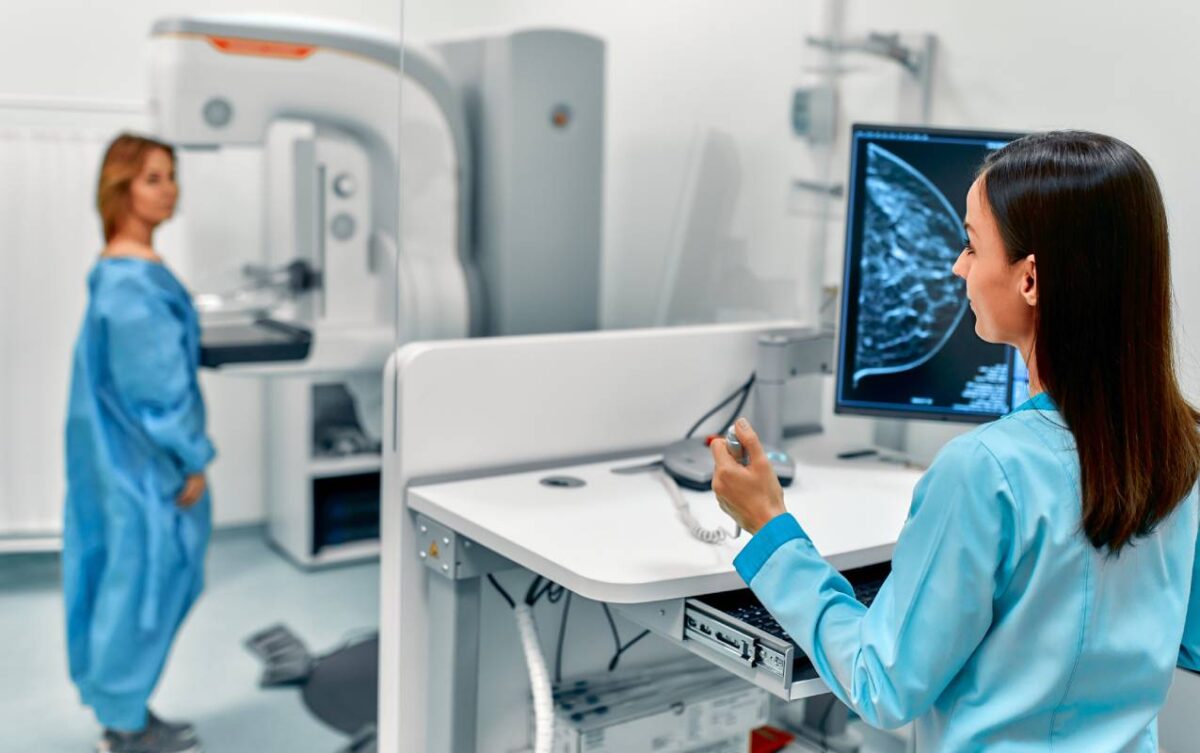Breast Cancer Screening: Recommendations and Modalities

Breast cancer is a leading cause of death for women in the US and around the world, and as more evidence regarding risk factors and genetic causes of breast cancer come to light, clear screening guidelines become more and more clinically relevant.
The current U.S. Preventative Services Task Force (USPTF) Grade A screening recommendation for breast cancer is screening mammography biennially for women aged 50-74 who have an average risk of developing breast cancer1. The guidelines have been subject to change over the years; before 2009 the USPTF recommended starting screening at 40 years old but revised their guidelines due to the high cost of mammography and the cost-benefit analysis of radiation exposure vs chances of catching breast cancer in a woman under the age of 501. However, while the guidelines themselves have changed, many primary care providers have not altered their practice to reflect this change1. According to a 2018 JAMA article, most primary care physicians that were surveyed recommend screening for women aged 40-49 years old, despite current guidelines1. The article hypothesized that the reason for this is that physicians overestimate how much mammography helps prevent breast cancer1. There is only a 19% decrease on average in the relative risk of getting breast cancer with regular screenings, and this number fluctuates based on age, going as low as 8% in younger women and as high as 33% in women aged 60-691. On the other hand, there are very real risks of over-screening with mammography: high rates of false positives leading to unnecessary biopsies and overdiagnosis leading to unnecessary treatment1. Because of these nuances, the JAMA article concluded that the decision to screen younger patients should involve shared decision-making between the physician and the patient and should always follow a thorough family history and personalized risk assessment1.
While mammography is a valuable screening tool and something that is implemented all over the world, it misses 16-31% of breast cancers4. Advancements in screening technology aim to improve this percentage and catch breast cancers before they metastasize. For example, 3D digital breast tomosynthesis is a new type of mammography, which use low dose X-rays to reconstruct 3D images of breast tissue4. It is particularly helpful in patients with dense breasts, because they help minimize tissue overlap, and have both improved cancer detection rates and reduced false positives4. Furthermore, machine learning is being integrated into breast imaging technologies as a way to double check the radiologist’s reading3. The program scans mammograms and other breast imaging to mark clinically suspicious masses or calcifications, which the radiologist then reviews and compares to their own reading3. A 2021 article in European Radiology examined the efficacy of AI-assisted digital breast tomosynthesis by comparing it to conventional mammograms2. This study found that AI-CAD synthetic mammography was better at detecting occult breast cancers and those with more subtle abnormalities than conventional mammography but was associated with increased false positives2.
Breast cancer screening is an important part of reproductive health, and there is a lot of work to be done in terms of advancements in technologies that accurately detect cancers while they are localized.
References
- Keating NL, Pace LE. Breast Cancer Screening in 2018: Time for Shared Decision Making. JAMA, 2018 ;319(17):1814–1815. doi:10.1001/jama.2018.3388
- Lee, S.E., Han, K. & Kim, EK. Application of artificial intelligence–based computer-assisted diagnosis on synthetic mammograms from breast tomosynthesis: comparison with digital mammograms. Eur Radiol, 2021; 31: 6929–6937. doi:10.1007/s00330-021-07796-y
- Masud R, Al-Rei M, Lokker C. Computer-Aided Detection for Breast Cancer Screening in Clinical Settings: Scoping Review. JMIR Med Infor, 2019; 7(3):e12660. doi.org/10.2196/12660
- “Breast Tomosynthesis.” RadiologyInfo.org. Reviewed on April 2022. https://www.radiologyinfo.org/en/info/tomosynthesis#0754a1c57a48442688b22ec3150e161e
